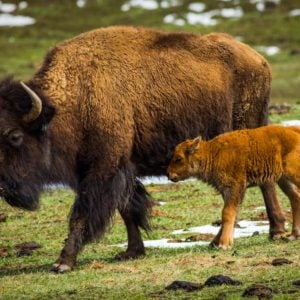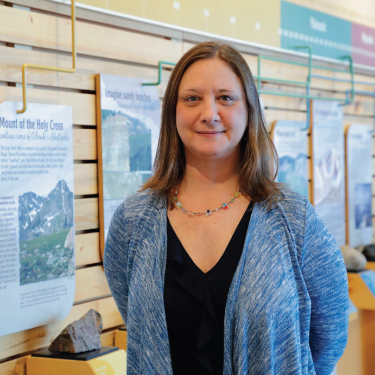Earlier this month, President Obama signed the National Bison Legacy Act, officially making the American bison the national mammal of the United States. The great bison now joins the ranks of the prodigious Bald Eagle, the mighty oak, and the Star Spangled Banner as one of our nation’s symbols. Interestingly, our nation only has a few symbols, and the Eagle and the Bison are the only animals among them. Now at the state level, it’s another story entirely, with some states designating a seemingly ridiculous number of species as “state animals.” Just as an example, some states have designated state grasses, state seashells, state microbes (yes, really!), and even dog breeds.
I’ll get to the newest symbol, the bison, in just a minute, but I think it’s worth commenting on this last statement first. It’s Oregon. Oregon is the only state with an officially designated microbe. It is a type of brewer’s yeast used in making beer, officially designated in 2013. Other states are considering the adoption of microbes though, including Wisconsin’s heated debates of 2009 over a cheese-making microbe, and Hawaii is still locked in discussion over whether to adopt a bioluminescent microbe discovered by a student in Oahu as their state microbe. I guess these states’ lawmakers must already have all the big problems solved.
 Photo © Rick Spitzer
Photo © Rick Spitzer
Leaving issues of the bureaucracy aside, let’s come back to the bison. If you’ve ever seen a bison close-up, you know that they are huge. A full grown bull, or male bison, can weigh up to 2000 pounds and stand almost 6 feet tall! The females, or cows, are slightly smaller, closer to 1000 pounds and 4-5 feet tall. These impressive stats mark the bison as North America’s largest mammal. The babies, weighing 30-70 pounds at birth, lack the big horns characteristic of the adults, and are sometimes called “red dogs” because they look like small dogs trotting alongside the rest of the herd. It takes a lot of food to feed an animal this size, and a bison will typically forage for grasses, weeds, and leafy plants for 9-11 hours every day! Even in the winter, they spend their days brushing the snow aside with their giant, fur-covered heads to create foraging patches. Studies show that bison grazing is important in increasing the diversity and health of prairie ecosystems, especially during regrowth after a fire.
The 17 bison herds of bison currently managed by the Department of the Interior, consisting of approximately 10,000 individual head of bison, represent a remarkable achievement in conservation; and that’s part of what this new designation is intended to honor. Before the onslaught of civilization, great herds of bison roamed free in the plains of North America, all the way from Alaska to Mexico, and from Nevada east to the Appalachian Mountains. By the late 1800s, though, there were only a few hundred bison left in the United States, due to the westward expansion and all it encompassed. Efforts from a few individuals, including Theodore Roosevelt, working with Native American tribes, state governments, and the US Department of the Interior, were successful in saving the bison from extinction. Today, bison herds are managed carefully, with ongoing breeding programs and partnerships to transfer bison from national parks to tribal lands in honor of the historical and ongoing connection between native tribes and the bison.
So while this new designation doesn’t really mean a lot in terms of official policy changes, it does represent an acknowledgement of wildlife as integral to our history, culture, and identity as a nation. In a way, all of the different federal and state-level species designations acknowledge the importance of nature, in its varied and diverse forms. When we honor an ancient species, like Colorado’s famed state dinosaur, the Stegosaurus, we are showing respect for the processes of evolution and diversity. And while we might find it amusing that Colorado’s state pet is any species adopted from a shelter; ultimately, it says something about how we value having animals in our homes, as part of our families. So while I’m tempted to continue making fun of Oregon for its state microbe, maybe I’m just jealous. The great bison is a symbol of unity, strength, resilience, history, and culture, and they deserve our respect and reverence; now they have it on a national level.
Jaymee Squires is the Director of Graduate Programs at Walking Mountains Science Center. Jaymee is enjoying watching all the trees turn green this spring and hoping for a relaxing summer.









